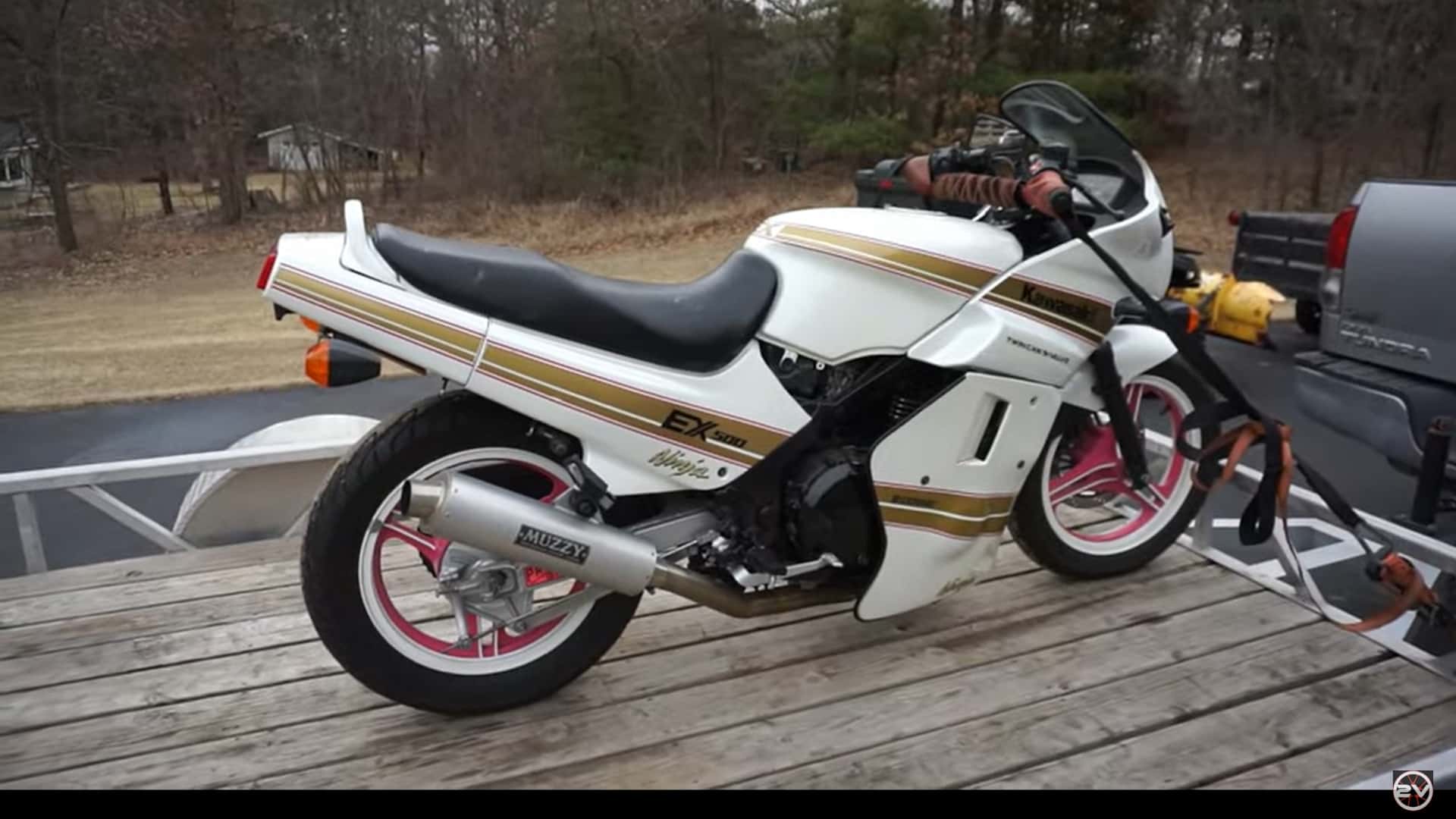
Simply wait until you lay eyes on this 1988 Kawasaki Ninja EX500 once you're inside the fairings.
If you’ve been keeping up with my work for some time now, you might know that I have a particular affection for ‘80s and ‘90s Japanese motorcycles. More precisely, I’m partial to Hondas. my Hawk or my VF500F Interceptor As shown in Exhibits A and B, I am also very interested in seeing what the other three Japanese OEMs were offering during that period. To be honest, my curiosity extends to everything from that time.
As someone passionate about bicycles from this period, I've naturally spent considerable time browsing online advertisements for the models I admire. Anyone who dedicates even a small portion of their time searching knows well that outcomes can differ significantly based on regional markets, especially when honing in on specific preferences.
When focusing specifically on the Chicago region, it’s challenging to locate an exceptionally well-maintained and beautiful classic Japanese motorcycle like this 1988 Kawasaki Ninja EX500 in such good shape for just $1,000, despite it not functioning perfectly. (Believe me, although my VF500 originated neither from Wisconsin nor Illinois, it certainly cost more than $1,000 and has experienced significantly tougher conditions compared to this Ninja.)
Sure, that might be why it was marked down so much, but it’s still surprising. In my region, something like that wouldn’t sell for such a price even when non-functional. Though Wisconsin isn't too distant, things operate quite differently beyond what they call the Cheddar Curtain—especially concerning antique bicycles and local sports rivalries.
If you share a passion for motorcycles from this period, seeing the static image of this bike likely gives you goosebumps, making you eager to hit the play button on the accompanying video. Just observe those fairings! And that Muzzy exhaust system! Seriously, the seat shows not a single flaw in its covering! The pink highlights on the wheels (though aftermarket, they’re well-executed) enhance the overall appeal of the white and gold design. even better !
Once you view the video, the visual charm becomes even more apparent. Honestly, I nearly fell into a state of admiration seeing just how clean and sharp the instrument panel looked. There were absolutely no signs of odd fogging, cracks, or indications that it had been exposed to sunlight for extended periods. While the windshield does show some minor webbing, it’s far less pronounced than what one would anticipate from a motorcycle of this vintage.
It’s abundantly evident that the previous owner meticulously maintained this bicycle, likely storing it indoors whenever it wasn’t in use. Simultaneously, it was actively used, which is precisely what one would hope for. This balance seems ideal for bicycles from this period regarding both usage and upkeep.
Joe from 2Vintage acquired this bicycle for next to nothing, just like he frequently does in Wisconsin. Typically, his reason is that the seller claimed it didn’t work. However, considering the expertise showcased in every one of their videos and encountering such an appealing bike, anyone with those abilities would gladly pay around $1000 and load it onto their trailer without hesitation, wouldn't they? Absolutely.
Currently, based on my experience with my 1985 Honda VF500F Interceptor up until now, my initial assumption leaned towards it being a carburetor problem. However, naturally, I decided to view the video to confirm whether my hunch was accurate.
As Vintage cautiously mounts the bicycle, you notice how well-preserved it really is. Only one small panel is absent (the little one beside the right side of the seat; visible in the image provided). However, all remaining parts appear to be in excellent condition. Upon removing the lower fairing which integrates with the belly pan as a single component, it’s simply so nice . More pleasant than any bicycle from this era should have a right to be. Incredible.
It still comes with the genuine Kawasaki factory toolkit stored beneath the seat! Count me as jealous, really. It’s great to see that (or at least, I think so).
He proceeds to inspect everything you would typically look at: fuses (all fine), spark, and compression (remarkably good; really, make sure you view this section). Ultimately, he removes the carburetors to examine them more closely and finds some minor blockages along with a slightly damaged diaphragm that should be replaced as a precautionary measure, though nothing major or worrisome.
Moreover, there’s a vacuum line connected to the fuel petcock. This appears to be obstructing the proper fuel flow for this 1988 Ninja EX500 motorcycle. After completely removing it, the bike operates with an almost unbelievable smoothness.
Observe, listen, and decide for yourself how much smoother it operates after he resolves that problem. This device definitely purrs Once he has it functioning correctly, I mean, to the extent that if you watch this video and at the end you’re not desperately eager to hop on this motorcycle yourself, then I’m not certain what you’re doing here.
Comin Back For More
- What's Off with This Idyllic '90s Yamaha Dirt Bike?
- Could This Be The Most Pristine 1992 Yamaha YZ125 Dirt Bike Discovery of All Time?
